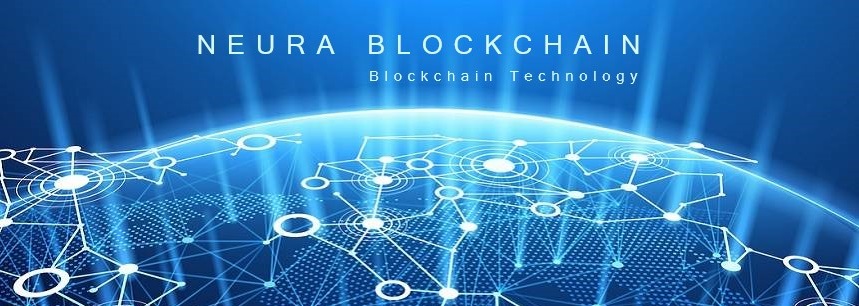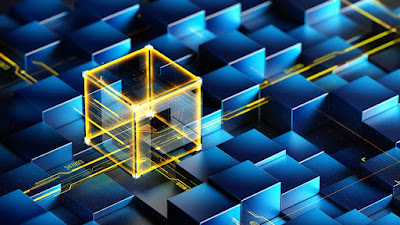One of the most striking myths for many in the community is related to the impossible blocks of Bitcoin. These are a series of blocks that keep certain details that make them unique and even seem impossible to create without some kind of unexplainable external intervention.
In the world of Bitcoin and cryptocurrencies there are many myths and legends, starting with the creator Satoshi Nakamoto (CIA) of whom absolutely nothing is known. But one of the strangest myths in the community, has to do with the” impossible blocks of Bitcoin", and behind them there is a huge amount of theories and myths that give much to talk about.
Some of these theories are very logical, but others are somewhat conspiranoic. However, they all seek to explain something that is certainly disconcerting. How is it possible that these blocks exist? Why are certain patterns repeated on certain hashes at more or less regular rates? And that's why we've created this new article, one that will help you understand the mystery behind the “impossible Bitcoin blocks.”
What are impossible blocks in Bitcoin?
Bitcoin impossible blocks, according to many bitcoiners, are a series of blocks whose Block ID or block hashes were generated in somewhat unknown forms or that share a more or less regular pattern, in what would be a very unlikely series of events.
The first case, for example, is currently applicable only to the genesis block of Bitcoin. The generation of this block is still a mystery to the community. While the latter, should not pose any problem. That is, it is a random hash and that a string appears as a pattern in several different blocks, should not surprise us according to the laws of probability.
However, the latter does surprise by one very specific thing. Most of these blocks share the chain "21E8". This is such an unlikely chain to generate, that the appearance of it should be a single event a year.
This is because these “21E8” hashes are hard to find, especially because the hexadecimal construction (the way hashes are generated) of that string is complex and requires large amounts of computational power. Of course, the Bitcoin network has a very high power, in fact, it is the most powerful supercomputer on the planet leaving by far the 500 most powerful supercomputers on the planet. But still, it is a rather unlikely event, and that it is repeated on a regular basis, makes it even less likely.
So we have basically a hash series that theoretically and probabilistically cannot exist, and yet they do exist. Quite striking the truth, so striking that the community has turned to get a meaning to them. However, the mystery of impossible blocks is just beginning. And the story of them was initiated by Satoshi Nakamoto himself, and we will examine that next.
The first impossible block: the Bitcoin genesis block.
If you ask anyone who knows the crypto world about the genesis block of Bitcoin, they will tell you that the block is quite an unsolved enigma. And you are right in your answer, because Bitcoin's genesis block is an impossible block.
In fact, the truth is that Bitcoin's genesis block is a " manipulated block." Many believe that Satoshi Nakamoto, being the only miner on the network, was able to manipulate Bitcoin software to mine this block and create it at will. Daniel Larimer's research on Bitcointalk tells us that; Nakamoto certainly manipulated the genesis block to create it in a special way. The question is, what did you do to make it so special? No one knows, not even Craig Wright who claims to be Satoshi, and who proves to us that's not what he says.
The problem is that generating that block required a very large computational power due to the difficulty of active mining at that time. The difficulty value of the block is so great that a powerful computer of the time should take at least 6 days to achieve it with a 17% chance. A Bitcointalk user performed these calculations on a 2008 AMD Phenom II X4 CPU. Your conclusion? Generating that block using that computer would have taken 58 days.
However, Nakamoto took only 4 minutes to pamper him, with quite small computational power, as shown by the srciptSig of that block. Did Nakamoto have a more powerful computer? Was it luck? We don't know exactly. The truth is that everything seems to indicate that if he had a very powerful computer, or simply, he was too lucky.
But the mystery gets bigger. Block 1 came out 6 days later, with a similar difficulty. Immediately after the block production accelerated maintaining the same level of difficulty. Did Nakamoto have a personal mining pool? We won't know either, but there are indications that the initial Bitcoin network was very limited in its genesis, in fact, the mining difficulty did not change in a long period of time, so only Satoshi Nakamoto was the one who mined on the network. Also, the first features for mining pools came much later, because the initial Bitcoin software didn't have that possibility.
Hence the mystery of the genesis block is even greater, and we probably never know how the genesis block was actually generated. But on the other hand, this opens the doors to the different theories of the impossible blocks, especially the 21E8 blocks.
The mystery of blocks with 21E8 hash
The blocks 21E8 have a very peculiar characteristics and to see them we show you one of these hashes: 000000000000000021e800c1e8df51b22c1588e5a624bea17e9faa34b2dc4a
As you can see, the string "21e8 “is located right after the string” 0" of the hash. This chain of 0 indicates indirectly the level of difficulty of mining. As more “0” is added at the beginning of the hash, Bitcoin mining is more difficult and complex. So getting that string (21E8) to always appear right after these " 0s " and at regular rhythms is a pretty unlikely event.
However, it is precisely the unlikely, what has happened. The previous hash, for example, belongs to block 528249, dated 6/19/18. But before them, there were the blocks 26284, 83434, 187323, 259695, 304822, 349158, 437039, 475118, according to data given by Emin Gün Sirer.
If we look at each of these blocks, they are separated by times that go on average to 393 days. A pattern that is not repeated with other chains. However, as Emin Gün Sirer has said very clearly, the generation of these chains is possible and he has proved it mathematically. The fact that they are repeated periodically responds to the fact that the power of Bitcoin and its network is enormous, humanity has never generated a machine as powerful as this and there are the fruits, making the almost impossible possible.
However, there are people who like mystery, and for that reason an avalanche of additional theories have been created, of which we go on to name a few.
Some other theories generated about impossible blocks
Bitcoin is a self-generated god
Bitcoin is the uniqueness of artificial intelligence in a world ruled by machines that traveled back in time to our days and created the blockchain to allow men to give a lot of computational power for their own creation, Bitcoin is a self-generated god.
This is one of the theories being put forward about the fact of how Bitcoin has worked since its inception. And it is that many people think that Bitcoin is a technology brought from the future by Satoshi Nakamoto, and that its disappearance responds to that it was captured for using an illegal temporary portal.
A quite creative hypothesis but totally out of this theory, because the truth is that all the bases of Bitcoin have been created during the last 100 years, so this theory falls by the tremendous historical weight and evidence against it. Another thing is that “Bitcoin is a self-generated god, " which has been jokingly taken up in the community.
Bitcoin has applications beyond the imagined
Another very common theory to explain this kind of thing is that Bitcoin, its enormous computational power, the generation of hashes for everything, has a use beyond what we can see, and that Satoshi Nakamoto is collecting all this information to achieve his ultimate goal, which is unknown.
The idea is also fueled by something that many regularly ask themselves-So much computing power and energy consumption just to generate hashes whose only function is to keep a cryptocurrency running? Certainly to many it seems a waste of computing power and energy. Although it is also true that, Bitcoin as a network and form of money is worth that and much more.
Despite that, many people have used this theory and have been used to generate variations, some more striking than others, and of which we will comment some:
Bitcoin and its network is actually the basis of building a computational network to artificially increase the intelligence of humans. The question is how would that be done? No one knows the answer and it's actually unlikely to be true.
Bitcoin is the basis for building a much broader knowledge and economy network. For example, the one devised by Ted Nelson's Xanadu Project. This man is a visionary to whom we owe the creation of the hypertext Internet as we know it now. For those who do not know the Xanadu Project, it was a network of information and exchange project very similar to the Internet, but that by far was much better and above all, it was decentralized. The project was born in 1960, and even today, Ted continues to develop his idea. This idea is quite possible, because Bitcoin could certainly be the basis for building such a network.

The appearance of the hashes "21E8" has a cosmic meaning with which it seeks to unveil the Theory of the Whole of Physics. Perhaps the craziest theory at this point, and is sustained, that “21” refers to Bitcoin's emission limit. While " E8 " refers to the Lie Group, an algebraic set with which symmetries are studied and which is the origin of one of the Theories of the Whole with which they seek to create a single equation that explains everything in the Universe.
Finding:
As you see the idea of “impossible Bitcoin blocks", it is not as realistic as many try to make it seem. The appearance of patterns such as “21E8", does not mean that there is an invisible hand manipulating Bitcoin from the shadows and violating all the laws of the physical world. Or if ... ?
On the other hand, the genesis block generation responds more to a riddle left by Satoshi Nakamoto. A riddle that maybe can give us an answer about who he really is, and he's there waiting for someone to figure it out. Or maybe the riddle doesn't say who it is, but if you access Nakamoto's private keys and they could make you own a fortune ... set to dream…
In the world of perhaps, many things can be, but the truth is that logically, the impossible blocks of Bitcoin are only the breeding ground of legends, like many others that have been generated in the community and are part of its rich history and culture.
Alejandro O. Asharabed Trucido
+54911 5665 6060
Buenos Aires, September 24, 2021





















